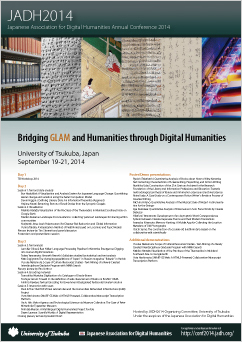Session 2-2
Landscape Documentation: Collecting “Personal” Landscapes for Sharing within Communities
- Tsuyoshi Tamura (Akita University of Art)
- Shoko Sumida (Ritsumeikan University)
- Mariko Kaname (Osaka University)
The aim of this study is to contribute to the awareness of the community landscape among residents so that they will regard maintaining the local landscape as an urgent matter for regional development. Additionally, drawing one's internal image of the landscape should be encouraged to ensure that adequate documentation exists.
First, we determined whether members of a community recognized their local landscape based on their actual experiences; we referred to a “landscape philosophy” espoused by Professor Nobuo Kioka of Kansai University. According to his theory, a characteristic of landscape structure is its susceptibility to social effects. This model has a trilaminar, triangular structure from bottom to top, a “fundamental landscape” experienced by individuals, a “collective landscape” shared within a defined community, and an “expressive landscape” typified by visual images on a postcard or famous painting and so on. These parts must be able to influence one another, but we doubt that individual fundamental landscapes have been sufficiently shared within the community. Therefore, our research focuses on the images, which are supposed to be immersed in the fundamental landscape, tentatively referencing the personal landscape here.
Second, our research explores the means of collecting personal landscapes for documentation; we incorporated a unique interview method in this effort. Data reflecting personal landscapes contain visual images (e.g., photos) and texts (e.g., comments). Thus, through the process of sorting these images and texts, personal landscapes were transformed into visible and readable data; ultimately, the data became recordable as digital data. Because one's “original landscape” is present in one's mind, it tends to be unobserved. Therefore, it is necessary to examine how to collect personal images or original landscapes from one's memory or association through observation. In this study, we conducted interviews (surveys) in combination with environmental autobiographies, spending about 90 minutes in an unstructured (semi-structured) interview and about 30 minutes in a semi-structured interview. The resulting research had two implications: 1) our interpretation of data (photos and comments) offered by participants enabled testing of Professor Kioka's hypothesis (mentioned previously), and 2) documentation of photos and comments provided opportunities to make community members sufficiently aware that their original landscapes had been shared locally. Thus far, we have tried to offer the collected data to a limited number of people representing local communities or to people who have personal connections with “weak ties” via magazines (e.g., Noshukufukei Saishu Shimpo has a small circulation and an Internet following at http://scapebear.jimdo.com/).
Indeed, people understand the individual nature of the personal landscape, but they are unclear about the root of this concept. Thus, this study attempts to create awareness of “shareability” within society, which has been overlooked. Collecting documents is not indicative merely of one's visibility of landscapes; rather, it reflects individual and aesthetic materials. The future challenge is to examine more accessible routes such as digital social networking site (SNSs) for the public.
In this study, we focused on a semi-open/semi-closed network such as Facebook (https://www.facebook.com/scapebear). At this SNS, information suppliers and users have a relationship. Through this digital SNS, we can expect that personal landscapes as individual aesthetic experiences will be shared loosely but definitely.
- Keywords
- ‘personal’ landscapes, documentation, interview, community, shareablity

